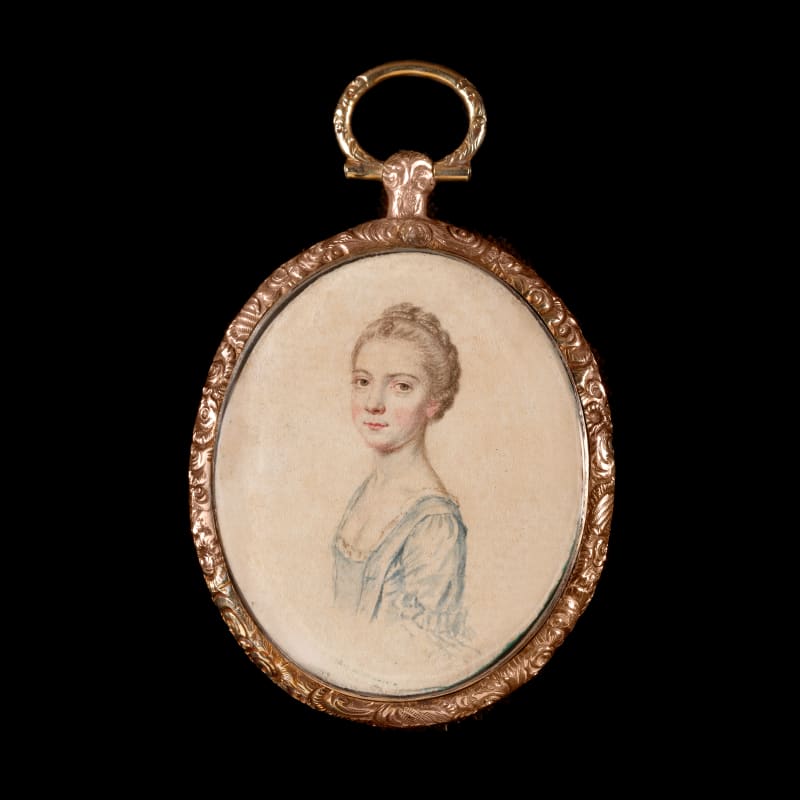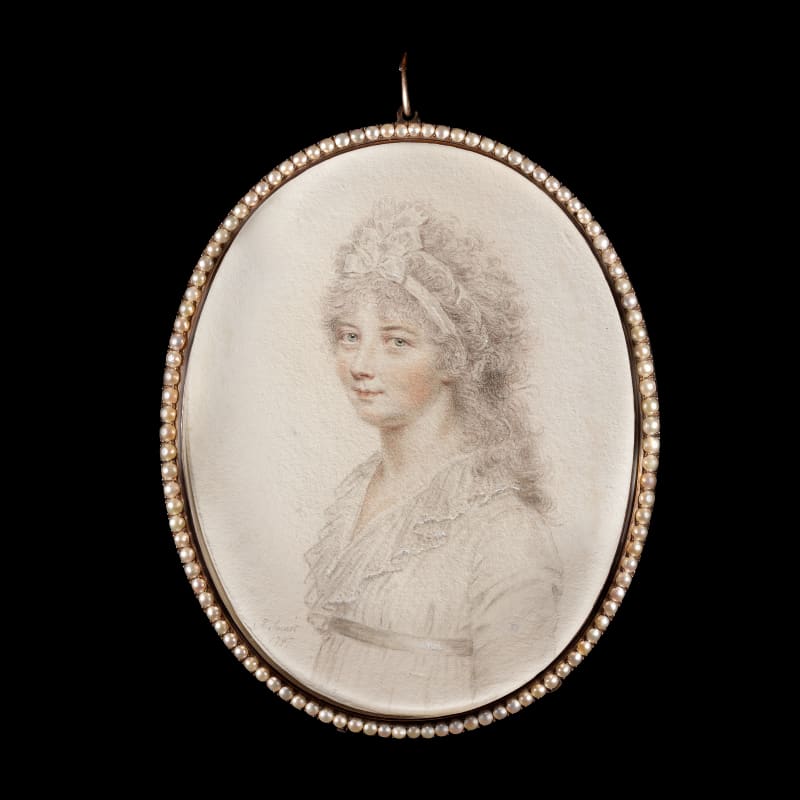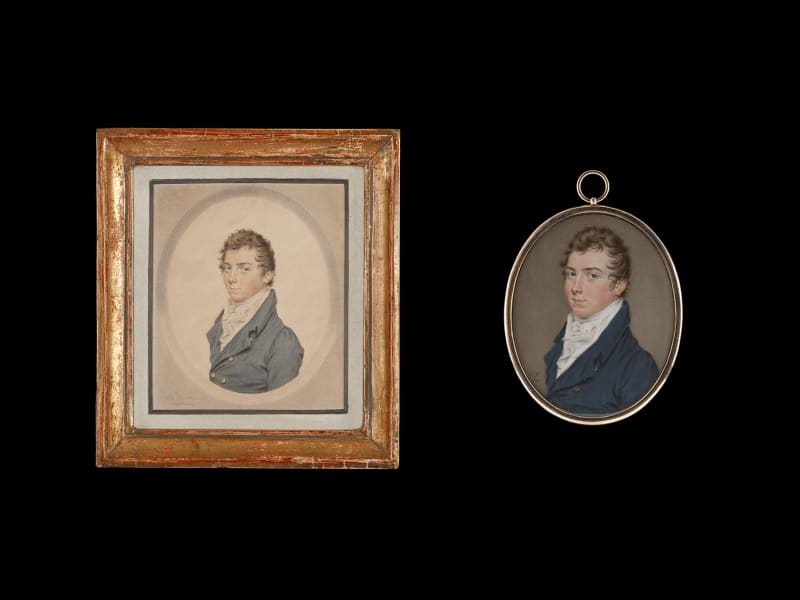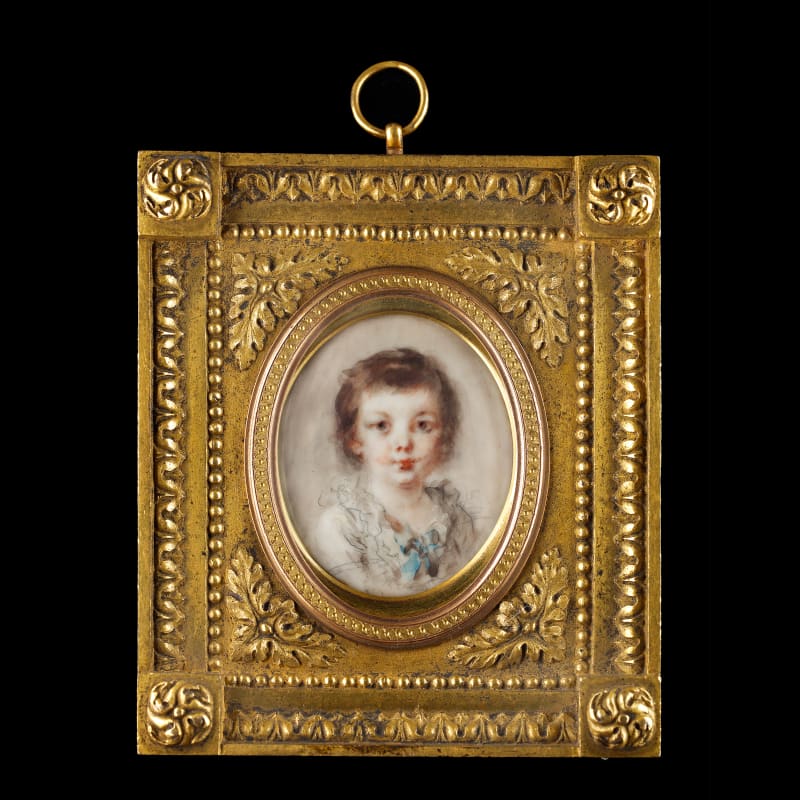This portrait of a ‘Mrs Shippey’ was drawn in London by John Smart in 1784, as preparation for his portrait of her on ivory.[1] Smart kept the drawings of his sitters in his studio sketchbooks, so this one may have been sold by his great grandchildren in the twentieth century as part of many drawings which they put through Christie’s and Sotheby’s salerooms. 1784 was a significant turning point for the artist, who was heading to Madras, India the following year.
Interestingly, members of the Shippey family were already in India, including a Thomas Shippey (probably the father-in-law of the present sitter), Chief Clerk of the Company's Stock Office, who was accused of practising illegally as a stockbroker for some years (court proceedings, 16 May 1766).[2]
It is likely that the present drawing represents Elizabeth Shippey, who was to follow her husband Thomas William, to India where he was based as a Lieutenant in the East India Company....
This portrait of a ‘Mrs Shippey’ was drawn in London by John Smart in 1784, as preparation for his portrait of her on ivory.[1] Smart kept the drawings of his sitters in his studio sketchbooks, so this one may have been sold by his great grandchildren in the twentieth century as part of many drawings which they put through Christie’s and Sotheby’s salerooms. 1784 was a significant turning point for the artist, who was heading to Madras, India the following year.
Interestingly, members of the Shippey family were already in India, including a Thomas Shippey (probably the father-in-law of the present sitter), Chief Clerk of the Company's Stock Office, who was accused of practising illegally as a stockbroker for some years (court proceedings, 16 May 1766).[2]
It is likely that the present drawing represents Elizabeth Shippey, who was to follow her husband Thomas William, to India where he was based as a Lieutenant in the East India Company. The present work would have been used to paint a miniature to send to her husband, ahead of her potential arrival. A child of the couple – a Thomas Shippey – was baptized in London in 1781 (at St Marylebone, Westminster) – and it is possible that by 1785/86 he would have been left behind to attend school in London. Elizabeth’s husband Thomas seems to have gone to India the year after the birth of his son and remained there until at least 1794, where he can still be found in the East India Company records. There is no record to state that Elizabeth joined him and it is possible that an exchange of miniatures provided some comfort in this long distance marriage.
John Smart would have been an excellent choice for the young Elizabeth to have sat to – not only was he a brilliant and talented artist, he also had close connections to India even prior to his decade-long stint in Madras. An example of Smart cleverly building connections with East India Company patronage can be seen in the portrait of Anne Hurlock, painted by Smart in 1777 (sold Philip Mould & Co.), as her father, Joseph Hurlock, served as a director of the East India Company between 1768-73. Smart remained in contact with the English patrons based in India, even after his return in 1795.
[1] Whereabouts unknown, listed in D. Foskett, John Smart: The Man and his Miniatures. London: Cory, Adams & Mackay Ltd, 1964, p. 73.
[2] ‘Letter from Ralph Morrison relating to a Letter of Attorney given by Mr Bristowe to John Goode to sell India annuities. He also complains that Thomas’, India Office Records and Private Papers. Ref: IOR/D/148 ff 193-94. The British Library.
For more information on embezzlement and the greed of the East India Company, see: D. Dalrymple, ‘The East India Company: The original corporate raiders’, The Guardian. 2015. Available at: https://www.theguardian.com/world/2015/mar/04/east-india-company-original-corporate-raiders










